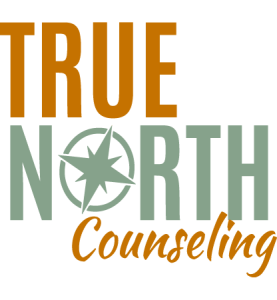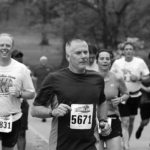I Have Wasted My Life | Healthy Aging Series: S11 E18
I was scrolling this morning, and I happened to see a reel from a therapist that had a list of things to avoid in order to take care of your mental health.
The first one was: Stop scrolling first thing in the morning.
First, I think he’s right.
Second, it’s a little ironic that someone on Instagram is advising you to stop scrolling on Instagram.
But, I also think if you’re going to address the negative effects of scrolling, what better place than Instagram.
I think watching local news contributes to all kinds of mental health problems, too. So, my wife and I have stopped watching local news in the morning.
Implied in the admonition to stop scrolling is the idea that it’s a waste of time.
One of my favorite poems is “Lying in a Hammock at William Duffy’s Farm in Pine Island, Minnesota,” written by James Wright. I’ll share it now:
Over my head, I see the bronze butterfly,
Asleep on the black trunk,
Blowing like a leaf in green shadow.
Down the ravine behind the empty house,
The cowbells follow one another
Into the distances of the afternoon.
To my right,
In a field of sunlight between two pines,
The droppings of last year’s horses
Blaze up into golden stones.
I lean back, as the evening darkens and comes on.
A chicken hawk floats over, looking for home.
I have wasted my life.
What an amazing way to end the poem, I have wasted my life. My take on this poem is that “up to that moment,” Wright had wasted his life or at least felt like he had wasted his life, in light of his experience in the hammock.
Funny, most would say that lying in a hammock is wasting time.
Clearly there are lots of things many of us would equate with timewasters, and by extension, ways of wasting our lives.
Aging with an Attitude
I’m sharing Stoic Practices in this season along with episodes on Fitness Revolutionaries, and Folk Tales.
This episode is about anger. I’m using William Irvin’s book, “A Guide to the Good Life,” as my source.
After reading Irvine‘s chapter on anger, it was clear that the Stoics believed that anger is anti-joy. And that being consumed with anger is a waste of time. I know there are those that disagree with the Stoic view on anger. I mostly agree with the Stoics.
My Views of Anger
As a therapist, I have taught that anger is an indicator that something is wrong, but it is not a good problem-solver. People say and do things, when they are angry, that they don’t mean and would never do otherwise.
I have taught the idea that you can’t think and feel at the same time. People get flooded with anger, and they stopped thinking. Some also believe that the person who displays the most anger, controls the family. Unfortunately, anger-one-upmanship creates a toxic environment for all.
I have promoted that the goal of family living is to lower expressed emotion, especially anger. This goal doesn’t prohibit being assertive in sharing emotions, but typically many families use a very narrow range of emotions and anger is often the primary emotion that is used to solve their problems.
Stoicism and Anger
I want to share one of the opening paragraphs from Irvine’s chapter on anger:
The best single source for stoic advice on preventing and dealing with anger is Seneca’s essay “On Anger.” “Anger,” says Seneca, “is brief insanity,” and the damage done by anger is enormous. “No plague has caused the human race more.” Because of anger he says we see all around us people being killed, poisoned, sued, and we see cities and nations ruined. And besides the destroying cities and nations, anger can destroy us individually. We live in a world after all, in which there is much to be angry about, meaning that unless we can learn to control our anger, we will be perpetually angry. “Being angry,” Seneca concludes, “is a waste of precious time.”
Anger destroys families. Anger destroys relationships. Anger destroys us.
I think it’s important to remember that anger is an indication that something is wrong. It could be a physical threat to you or someone you care about. It could be a threat to something that you value like a belief. It could be a response to what you perceive as injustice.
Anger is perceiving something is wrong or you perceive that you have been wronged.
Fight, Flight, or Freeze
Let me point out that the Stoics are not talking about the Sympathetic Nervous System’s response to a threat. The fight, flight, or freeze response. It’s our Amygdala taking over as a means to our survival. However, the amygdala is often what gets us into trouble. An overreaction to a perceived threat. A word triggers a “fight“ response.
I think treating an anger problem should have two prongs of attack. The first prong would provide treatment for decreasing your arousal response to annoyances or what some people call triggers. The first thing to do then is to address the Amygdala. We do this through Exposure Therapy: utilizing grounded breathing and your imagination.
You find a quiet place. Begin breathing through your nose for 2 to 5 cycles. Then you imagine yourself in the situation that triggers your anger.
It’s like going to a gym. You don’t pick the hardest weight and you don’t pick the lowest weight to work out with. You use a moderate amount of emotional energy so that you feel the same feelings that you felt when being triggered. You do this for 10 minutes three times a day. I had a client that would get into a heated argument with his spouse that would result in a spiral-out-of-control and things were said and done that were regretted later. He started the Exposure Therapy. I told him the more the better. Within four weeks his arousal response dropped dramatically. He was able to have discussions with his partner and no tantrums on his part. That’s a physiological approach.
Cognitive Behavioral Therapy
Stoics tended to be more heady or cerebral in their approach and similar to what might be called an Anger Management Program. This approach addresses the way we think. It’s probably very similar to what is called Cognitive Behavioral Therapy. If we’re going to prevent anger responses, we need to change how we think about ourselves and the world we live in.
Irvine shares several strategies.
First, fight our tendency to believe the worst about others and the tendency to jump to conclusions about their motivations.
Carl Jung had a term for this and it was called Projection. I always remind people that when you point a finger at someone in blame, there’s always three fingers pointing back at you, suggesting that you have a role in the problem.
Second, keep in mind that just because things don’t turn out the way we want them to, it doesn’t follow that someone has done an injustice to you or to others.
I have to remember that there are things out of my control, which includes people, places, and things. Anger is often our failure to adjust to the things that will not adjust to us.
Third, remember that in some cases, the person at whom we are angry, in fact, helped us.
I think the Stoics were reflecting about their day and asking themselves, what did I learn from my experience, including my bouts of anger.
Fourth, keep in mind that the things that angers us generally didn’t do any real harm. They are instead minor annoyances. I have to remind myself of this while driving the streets and highways in the metro area.
Fifth, we should use humor to replace our anger. I’m not very good at this. I usually think of something pithy to say days later.
Six, contemplate the permanence of the world around us.
Irvine writes, “Thus when we should feel ourselves getting angry about something, we should pause to consider it’s cosmic insignificance. This might enable us to nip our anger in the bud.”
Hundreds of years from now, the event or situation that triggered our anger will be remembered by no one, and amount to nothing. As Squirrely Dan (Letterkenny) says, “Kind of makes you wonder.”
I might add my seventh strategy,
Let other people be human. They aren’t perfect. Cut people some slack
I have had my bouts with anger, not something that I’ve enjoyed. I’ve worked with people that seem angry all the time. It would seem to me that they are robbing themselves of the tranquility that we all seek. And they are wasting their lives.
Anger is the anti-joy as Irvine declares.
Maybe it’s time to find a place to string up a hammock, and then contemplate what’s important, contemplate on how you have possibly been wasting your life.













